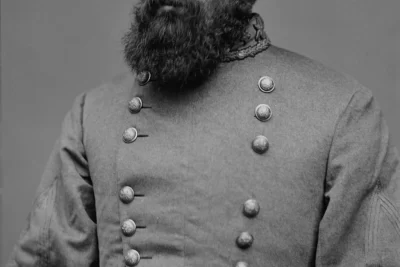
What are the secrets of maritime exploration in ship navigation

The world of maritime exploration is a tapestry woven with tales of bravery, innovation, and determination. The secret of **ship navigation** lies not just in the technological advancements over the centuries but also in understanding the intricate relationship between sailors and the sea. With the vast oceans acting as both routes for exploration and barriers to progress, **ship movement** has defined the trajectories of civilizations throughout history. This article delves deep into the secrets that have shaped maritime exploration, focusing on how navigation has evolved and the discoveries that have marked the course of humanity.
As we journey through time, we shall uncover the **historical significance of ship navigation**, its various challenges, and the innovative solutions that have arisen in response. **Ship design** has been instrumental in propelling expeditions across the waters, ensuring that navigators could traverse both familiar and uncharted territories. With the ever-evolving landscape of maritime practices, the lessons learned from our past explorations continue to influence modern navigation techniques today.
Throughout history, **ship navigation** has played a crucial role not just for trade but also for cultural exchanges between civilizations. The capability to navigate vast bodies of water enabled early explorers to establish connections with distant lands, fostering economic and social relationships that would transcend time. This ability to maneuver **ship movement** effectively gave rise to the notion of exploration, allowing civilizations to venture beyond their horizons and reach new territories.
Ancient Maritime Innovations and Technologies
The ingenuity of ancient civilizations resulted in remarkable technological advancements that revolutionized **ship movement**. From simple dugout canoes to elaborate seafaring vessels equipped with sails, these innovations were pivotal in enhancing navigation skills. The invention of the **compass** and advancements in cartography laid the groundwork for more reliable maritime routes. The shift from relying solely on visual landmarks to using celestial bodies for navigation marked a significant evolution in maritime practices, leading to more adventurous voyaging.
The **Nile River** served as a lifeblood for ancient Egyptian civilization, providing vital routes for transportation and trade. Ancient Egyptians constructed a variety of boats, some of which were engineered to transport large stone obelisks along the river. **Ship movement** on the Nile exemplified both functionality and design, promoting trade between regions and allowing for sophisticated agricultural practices to flourish. The river's predictable currents and seasonal floods were carefully studied, offering valuable insights into timing voyages and maximizing cargo loads.
Evolution of Ship Design: Function and Performance
As maritime exploration progressed, **ship design** reflected the evolving needs of seafarers. Warships were engineered for **speed and maneuverability**, crucial for defense and naval power. Conversely, cargo ships prioritized large capacities that could accommodate diverse goods for trade. This distinction in design was not merely about aesthetics but was rooted in the demand of the time, shaping the very essence of how ships operated on the world’s seas.
Regional Variations in Shipbuilding Techniques
Different cultures around the globe developed unique traditions in **shipbuilding**, leading to regional variations that shaped the ships of their time. Mediterranean civilizations favored **carvel-building** techniques, where hulls were constructed using planks fitted together with overlapping edges, while northern European cultures often used clinker construction with overlapping planks for added strength. This diversity in techniques was influenced by the available materials and the specific challenges presented by local water conditions, thus enhancing the adaptability of each vessel type.
Trade routes established by early explorers were integral to facilitating **ship movement** across various seas. The exchange of goods, ideas, and cultures flourished as advances in ship design improved the capacity and efficiency of maritime commerce. Navigators learned to read the winds, currents, and tides as they sought to maximize trade routes through careful planning and navigation. The competition for resources prompted nations to develop their fleets, leading to a golden age of exploration that would define global trade networks.
Despite the grandeur of maritime exploration, navigators faced considerable challenges on the open seas. Weather conditions, unpredictable currents, and the vastness of the oceans posed constant threats to even the most seasoned sailors. However, through innovation and resourcefulness, they developed methods to overcome these barriers. Techniques such as the use of **dead reckoning** and observing the stars guided sailors to maintain their course, ensuring that **ship movement** was as reliable as possible.
Notable Voyages and Discoveries in Maritime History
Throughout history, numerous voyages have captured the imagination of generations. Explorers like Christopher Columbus, Ferdinand Magellan, and Vasco da Gama pushed the boundaries of what was known, driven by an insatiable curiosity and ambition. Each voyage brought not only new discoveries but also deeper understanding of **ship navigation** and its importance. These expeditions were characterized by the challenges faced at sea and the ingenious solutions that came to light, illustrating the resilience of those who dared to venture into the unknown.
The treasures and knowledge amassed during early explorations laid a foundational legacy for modern navigation practices. Techniques developed in earlier centuries continue to shape the way contemporary mariners navigate vast expanses of water. Understanding **ship movement** has become a science, with advanced instruments and technology supplementing the age-old techniques learned by our ancestors. The meticulous study of navigation has transformed how we approach maritime travel today.
Conclusion: Lessons from the Past for Future Explorations
As we reflect on the profound significance of maritime exploration, it's clear that the **secrets** of **ship navigation** are deeply rooted in our history. The evolution of **ship movement**, design innovations, and navigational techniques continue to inform modern practices, paving the way for future explorations. The journeys taken by our predecessors inspire us to push the limits of our understanding and capabilities in navigating the world's waters, reminding us of the spirit of exploration that resides within us.
In conclusion, the lessons learned from our maritime past remind us that exploration is not just about the destination but about the journey itself. Every wave crossed and every horizon met enhances our knowledge and appreciation for the world around us. As we look to the future, we must cherish the wisdom handed down through generations, ensuring that the secrets of ship navigation continue to guide our paths on the waters ahead.
Did you find this article helpful? What are the secrets of maritime exploration in ship navigation See more here Education.
Leave a Reply






Related posts